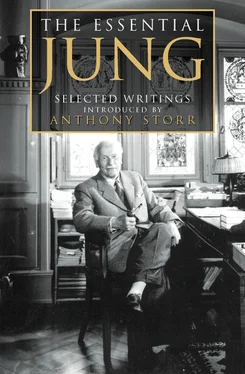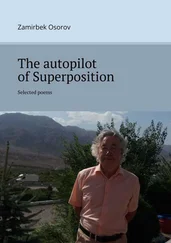Anthony Storr
Carl Gustav Jung was born on 26 July 1875 and died on 6 June 1961. The greater part of his early childhood was spent at Klein-Hüningen, near Basel, to which his family moved in 1879. Jung attended the local school from the age of six, and, in his eleventh year, was transferred to the Gymnasium in Basel. From here, he went on to study medicine at the University of Basel during the years 1895–1900. Concurrently, he read extensively in the fields of philosophy and theology.
In 1900, he moved to Zurich where he became an assistant physician to Eugen Bleuler at the Burghölzli mental hospital. He was later promoted to Senior Staff Physician. In 1902–3, he spent a term at the Salpêtrière in Paris in order to study psychopathology with Pierre Janet. During these first years in psychiatry, he wrote his MD dissertation, “On the Psychology and Pathology of So-called Occult Phenomena”; undertook experimental work in word association; and, in 1903, married Emma Rauschenbach, by whom he had a son and four daughters. In 1905, he was appointed a lecturer in the University of Zurich.
In 1907, Jung published a pioneering book on schizophrenia, The Psychology of Dementia Praecox, which he sent to Freud. This led to a meeting between the two men in Vienna, and to a close association between them which lasted until 1913. In 1909, Jung, in company with Freud and Ferenczi, paid his first visit to the USA, where he lectured on word-association experiments and received an honorary degree from Clark University, in Massachusetts. In the same year, Jung gave up his post at the Burghölzli in favour of his growing private practice which he conducted in his own house at Küsnacht on the Lake of Zurich. Although he travelled in various parts of the world and paid frequent visits to his country retreat in Bollingen, which was also on the Lake of Zurich, Jung continued to practise and to write in the same house in Küsnacht until his death in 1961. His last piece of writing was completed only ten days before he died.
Jung’s earliest work and his later writings have more in common than is generally supposed. They are linked by the theme that mental illness is characterized by disunity of the personality, whilst mental health is manifested by unity. Jung’s first study was conducted on a 15½-year-old girl who, claiming to be a medium, said that she was “controlled” by a variety of different personalities, which Jung interpreted as personifications of various unconscious parts of herself. Before Freud’s concept of repression became widely employed, the term used to describe such phenomena was “dissociation”; and Jung, who at that time was as much influenced by Janet, with whom he had studied, as he was by Freud, whom he had only read, continued to think of personality as being capable of dissociation into a number of subsidiary personalities, any of which could temporarily “take over.” Although Jung accepted the idea of repression in the Freudian sense of making the unacceptable unconscious, and thus inaccessible, he continued to think and write in terms of subsidiary, dissociated personalities, and it is important to bear this in mind when approaching his work. In hysteria, for example, the patient might behave as if she were two or more different persons, who were sometimes given different names and who had no cognizance of each other. Dissociation was a splitting of the personality in which the right hand did not know what the left was doing; and it followed that cure of this type of neurosis depended upon making the divided selves conscious of each other and thus creating a new unity. In schizophrenia, the personality appeared fragmented into many parts, rather than into two or three as in hysteria. Moreover, whereas the hysteric retained contact with reality by means of that part of the personality which was already being called the “ego,” the schizophrenic lost contact with reality because the ego was overwhelmed by irruptions from the unconscious and became only one “voice” amongst many.
Jung’s next group of studies was based upon the word-association test. A list of a hundred words is read out, and the subject is asked to respond to each with the first word that occurs to him. By timing the interval between stimulus and response, it becomes possible to show that, unknown to themselves, subjects are influenced by words which arouse emotion and slow down their responses. Often, groups of words were linked around a theme; and to such a collection of associations, Jung applied the word “complex,” a term which he introduced into psychology. He regarded complexes as similar to, but lesser than, the subsidiary personalities referred to above. These experiments were important in that they demonstrated objectively, in ways which could be measured, the dynamic effects of unconscious mental contents. They will also remind the reader that Jung was trained in the natural sciences and had an accurate grasp of scientific method, although his later interests drew him into fields where scientific method cannot easily be applied.
Although Freud’s writings were being eagerly discussed by the younger generation when Jung was working at the Burghölzli, psychiatry was dominated by German phenomenology. Psychiatrists were content to describe their patients’ symptoms and behaviour, and to fit them into diagnostic categories, without attempting to understand them as individuals. Jung, by applying psychoanalytic ideas to the study of delusions and hallucinations, was able to demonstrate that such phenomena, hitherto dismissed as incomprehensible, could sometimes be shown to have a psychological origin and meaning. Jung remained keenly interested in schizophrenia, and was one of the first psychiatrists to attempt psychoanalytic treatment of the psychotic.
Jung was never dogmatic as to a single “cause” of schizophrenia, although he inclined to the belief that a psychological, rather than a physical, origin was probable. He was also modest in his therapeutic claims, recognizing that only a limited number of cases responded to analysis, and that partial alleviation was more common than cure. Jung considered that there were many schizophrenics who never came near a mental hospital. If such people consulted him, he was cautious and sometimes dismissed them without attempting psychotherapy. Jung was one of the first to recognize that a psychotic episode could be precipitated by analysis.
It was Jung’s intimate acquaintance with the phenomena of schizophrenia which led him to postulate a “collective” unconscious. He found that delusions and hallucinations, which often seemed to be variations on similar themes, could seldom be entirely explained as products of the patient’s personal history. Jung’s extensive knowledge of comparative religion and of mythology led him to detect parallels with psychotic material which argued a common source: a myth-producing level of mind which was common to all men.
Jung described the collective unconscious as consisting of mythological motifs or primordial images to which he gave the name “archetypes.” Archetypes are not inborn ideas, but “typical forms of behaviour which, once they become conscious, naturally present themselves as ideas and images, like everything else that becomes a content of consciousness.” (CW 8, par. 435) Archetypes have an organizing influence on images and ideas. Archetypes are not themselves conscious, but seem to be like underlying ground themes upon which conscious manifestations are sets of variations. Their presence is felt as “numinous”; that is, of profound spiritual significance. Jung wrote:
All the most powerful ideas in history go back to archetypes. This is particularly true of religious ideas, but the central concepts of science, philosophy and ethics are no exception to this rule. In their present form they are variants of archetypal ideas, created by consciously applying and adapting these ideas to reality. For it is the function of consciousness not only to recognize and assimilate the external world through the gateway of the senses, but to translate into visible reality the world within us. [CW 8, par. 342]
Читать дальше












